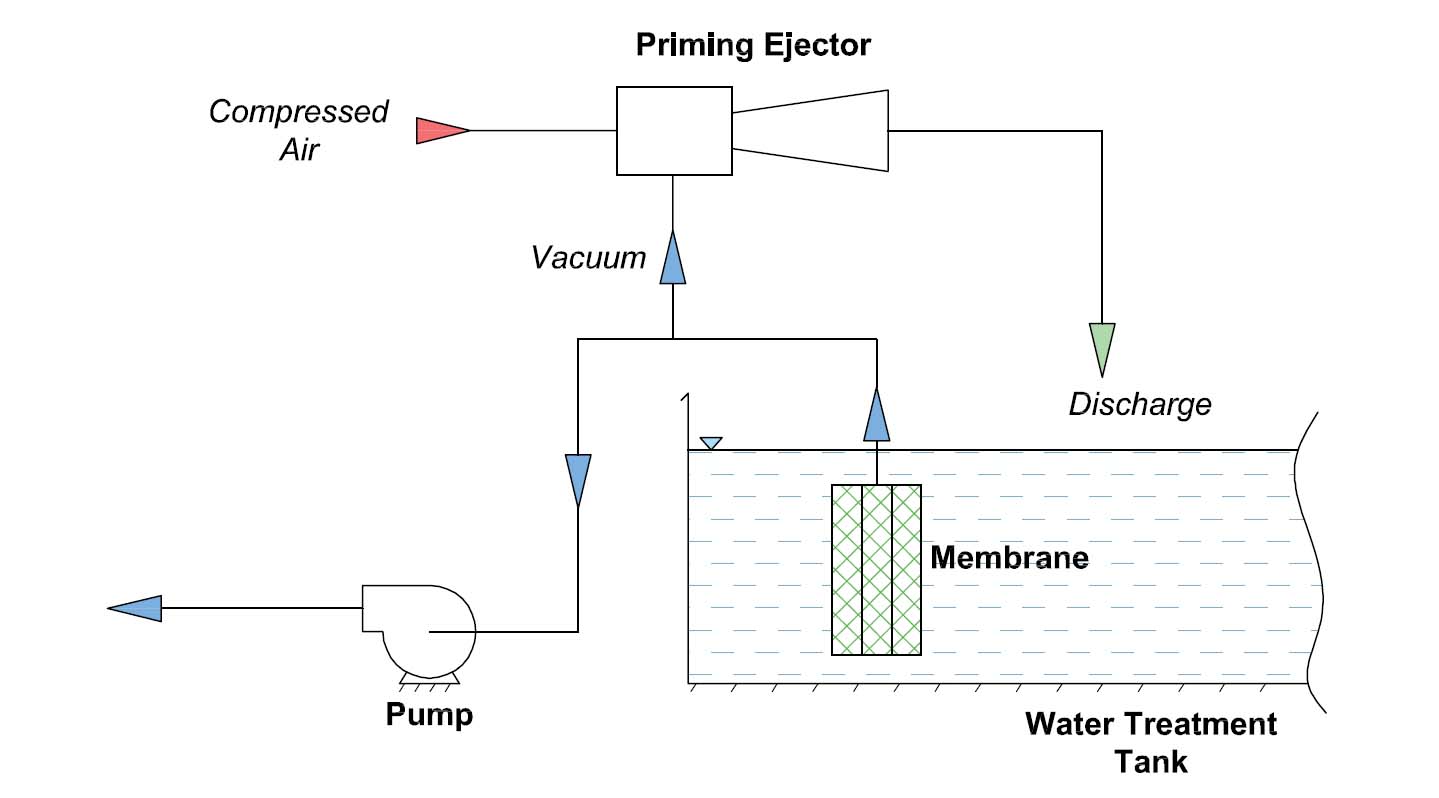Membrane Bioreactors(MBR) are widely used in municipal and industrial wastewater treatment. The MBR operation requires the circulating pumps to draw wastewater from the tanks through the membranes.
The membranes tend to create a pressure drop and do not readily allow the waste water to pass through when the pumps are not running. Hence due to this restriction the waste water is not able to pass through the membranes and fill up the suction pipelines of the pump.
Most of the MBR pumps are of centrifugal type and require their suction lines to be primed to start operation.
In such scenario, the best alternative to carry out priming for MBR pumps is to evacuate the air from the suction pipelines and create vacuum in it.
The created vacuum creates a head difference across the membrane and draws Liquid from the waste water into the tanks and into the suction pipelines
Priming Ejectors are simple devices that operate on the basis of the jet Venturi principle.
Priming Ejectors utilize the energy in compressed air for their operation and create vacuum at its suction inlet.

The suction inlet of the Priming Ejector is connected to the Suction Pipeline and MBR Pump casing. This enables the Priming Ejector to evacuate the air inside the Suction Pipeline and draw wastewater into the MBR Pumps
Priming Ejectors are best suited for priming of MBR Pumps due to their inherent characteristics
• Ease of Operation – The ejector is switched On/Off entirely by controlling the Air / flow to the ejector. Hence it is not necessary to access the ejector for controlling its operation.
• Availability in SS316 Material – offers excellent corrosion resistance against wastewater.
• Priming Ejectors do not contain any moving parts and have large internal passage areas, hence are not vulnerable to liquid entry or clogging by solid particles.
• As they have no moving parts, maintenance requirements are very less. Also it reduces largely the risk of abrupt breakdowns, helps in maintaining the regular production schedule
• Compressed air is a commonly available utility and hence no additional infrastructure is typically required.

